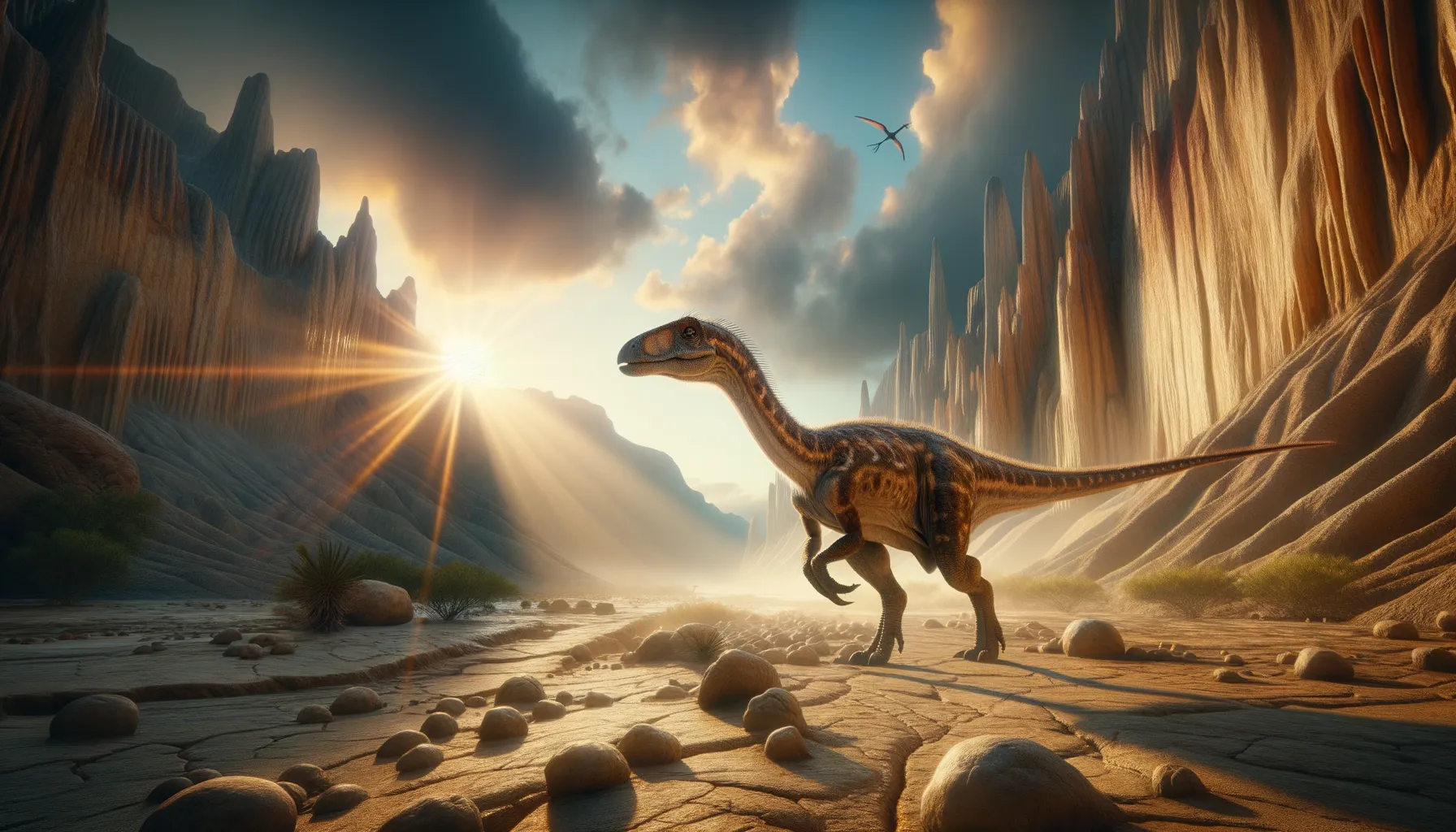
Scleromochlus
A tiny stride in evolution's grand journey.
Period
Triassic
Length
Length was about 20 to 30 centimeters.
Height
Stood approximately 10 to 20 centimeters tall.
Weight
Estimated to weigh less than one kilogram.
Scleromochlus is an intriguing small archosaur that offers valuable insights into early dinosaur evolution. It lived during the late Triassic period and is considered an ancestor of pterosaurs. Typically found in sandstone deposits, it showcases adaptations that suggest it was well-suited to a life in dry and arid conditions. The fossils have provided paleontologists a glimpse into the pre-dinosaur world, highlighting the diversity of life forms during this period.
Diet
Scleromochlus likely fed on small insects and other tiny invertebrates. Its agile nature and quick movements would have made it an effective predator of these small creatures.
Hunting
It utilized its speed and agility to chase down its prey, stalking in the dry environments it inhabited. With a likely reliance on quick bursts of speed, hunting would have been a solitary endeavor.
Environmental challenges
Living in arid conditions, Scleromochlus faced challenges such as limited water availability. Its small size would have made it vulnerable to larger predators. Additionally, finding food during dry spells could have been difficult, demanding adaptability in hunting techniques.
Speed
Likely agile and able to run quickly.
Lifespan
Lifespan is not precisely known.
First discovery
Discovered in 1907 in Scotland.
Fun Facts
- Scleromochlus was a small dinosaur-like creature that lived about 210 million years ago during the Triassic period.
- Despite not being a true dinosaur, Scleromochlus is closely related to the group that includes both dinosaurs and pterosaurs.
- This tiny creature was only about the size of a modern-day sparrow, making it one of the smallest dinosaur relatives.
- Scleromochlus is known from fossil remains found in what is now Scotland, providing evidence of ancient ecosystems in that region.
- Its name means 'hard skull', which refers to the sturdy construction of its head and is characteristic of its genus.
- Scleromochlus was likely a speedy runner, using its long hind limbs to dart across the ancient landscapes.
- The fossil discovery of Scleromochlus has helped scientists understand the early evolution of archosaurs, a group that includes both dinosaurs and modern birds.
Growth and Development
Scleromochlus would have undergone rapid development to quickly reach adulthood and gain a survival advantage. Fossils suggest early growth stages included quick limb development, enhancing their agility. It's plausible that it matured faster than larger animals, decreasing the risk period as a juvenile.
Habitat
This small creature inhabited the semi-arid regions of what is now modern-day Scotland. The landscape consisted of dry, sandy expanses with sparse vegetation. Adapting to its environment, it needed to navigate both open areas and potential rock formations for shelter and hunting.
Interaction with other species
As a small creature, it likely had to avoid predators, which facilitated its skittish and quick nature. Interaction with larger species was likely minimized to prevent predation. However, it might have competed with other small insectivores for resources.
Natural lifespan
Its natural lifespan was likely short, reflective of its small size.
Reproduction
Reproduction likely involved laying small clutches of eggs, similar to other small reptiles. Nesting might have occurred in sheltered locations to protect against environmental extremes. Parental care beyond egg-laying is assumed minimal.
Social behaviour
Scleromochlus appeared to be solitary, focusing on individual survival strategies. Social interactions were minimal, likely only occurring during brief mating seasons. Its social behavior was highly dictated by its need to avoid larger predators.
Fossil locations
Fossils of Scleromochlus have been primarily found in sandstone deposits in the Lossiemouth Sandstone Formation in Scotland. These locations provide vital clues about the ecology of late Triassic ecosystems. The preservation of these fossils has been crucial in understanding early archosaur evolution.
